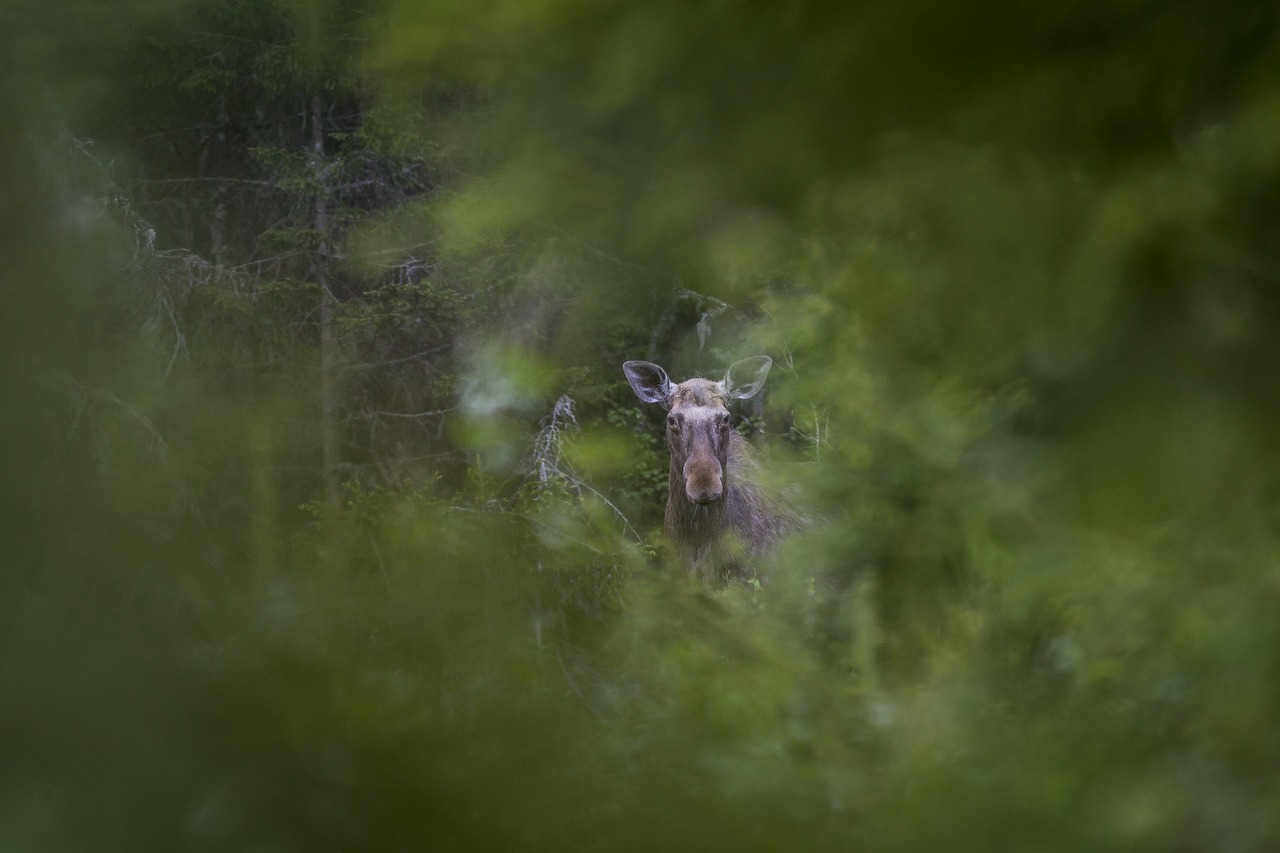The Moose (Alces alces), also known as the Elk in Europe, is the largest member of the deer family (Cervidae) and is recognized for its impressive size and distinctive features. Native to the northern regions of North America, Europe, and Asia, the moose is an iconic species in many temperate and boreal forests.
Physical Description
- Size: Moose are the largest deer species, with males (bulls) standing about 1.4 to 2.1 meters (4.5 to 7 feet) at the shoulder and weighing between 360 to 700 kilograms (800 to 1,500 pounds). Females (cows) are generally smaller, standing around 1.3 to 1.8 meters (4.3 to 5.9 feet) at the shoulder and weighing 270 to 450 kilograms (600 to 1,000 pounds).
- Antlers: Males have broad, palmate (hand-shaped) antlers that can span up to 1.8 meters (6 feet). These antlers are typically shed each year after the mating season and regrown in the spring.
- Body: Moose have a large, robust body with long, spindly legs that help them navigate through deep snow and marshy areas. Their large, bulbous nose is adapted for foraging on aquatic vegetation.
- Neck and Dewlap: They possess a characteristic dewlap or “bell,” which is a flap of skin that hangs from the throat. This feature is more prominent in males and is used in displays during the mating season.
Distribution and Habitat
- Range: Moose are found in the northern parts of North America (Canada and the northern United States), Europe (Scandinavia, Russia, and the Baltic States), and Asia (northern parts of Russia and Kazakhstan). They inhabit a range of environments, including boreal forests, temperate forests, and wetlands.
- Habitat Preferences: They prefer areas with abundant aquatic vegetation, such as swamps, bogs, and lakeshores. Moose are often found in forested areas that provide both forage and cover.
Behavior and Diet
- Feeding: Moose are herbivorous and have a diverse diet that includes leaves, twigs, bark, and aquatic plants. In summer, they feed heavily on aquatic vegetation like water lilies and pondweed, while in winter, they consume twigs and bark from shrubs and trees.
- Activity: Moose are generally solitary animals, although they can be seen in groups during the mating season or in areas with abundant food resources. They are active during the day and can be particularly active during the early morning and late afternoon.
Reproduction and Lifecycle
- Mating: Mating season occurs in the fall, typically from late September to October. Males engage in vocal displays known as “rutting calls” to attract females and establish territory.
- Gestation and Birth: After mating, females have a gestation period of about 230 days. They usually give birth to one or two calves in late May to early June. Calves are born with reddish-brown fur and are able to stand and walk within a few hours of birth.
- Calves: The mother raises the calves alone, nursing them for several months. Calves stay with their mother until they are old enough to fend for themselves, usually by the following spring.
Ecological Role
- Vegetation Management: Moose play a significant role in their ecosystems by browsing on vegetation, which can influence plant community dynamics and maintain habitat diversity.
- Prey and Predators: While adult moose have few natural predators, they can fall prey to wolves, bears, and, occasionally, mountain lions. Calves are more vulnerable to predation.
Conservation Status
- Status: Moose populations are generally stable across most of their range, although they can face localized threats. In some areas, moose populations are affected by habitat loss, climate change, and disease. For instance, warmer winters can lead to increased tick infestations, which can be harmful to moose.
Summary
The Moose (Alces alces) is a majestic and distinctive member of the deer family, recognized for its large size, broad antlers, and unique adaptations to life in northern forests and wetlands. It plays an important ecological role as a herbivore and is an iconic species in the northern regions of its range. Understanding and conserving moose habitats is essential for maintaining healthy populations and ensuring the well-being of these remarkable animals.
Views: 167
Subscribe to the newsletter:
